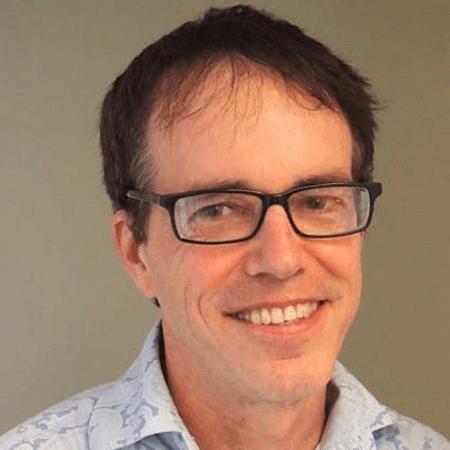
Professor Paul Mullins was a historical archaeologist who studied the intersection of materiality and the color line, focusing on the relationship between racism, consumption, and urban displacement. Mullins’ research has focused on urban displacement in Indianapolis, examining how a century-old, predominately African-American community was displaced and is now reconstructing its history. His scholarship has included archaeological excavations, documentary research, and oral history in Ransom Place, Flanner House Homes, the present-day IUPUI campus, and postwar African-American suburbs.
During 2016-2017, Dr. Mullins, along with his Anthropology Department colleague Professor Susan Hyatt, were named the inaugural Charles R. Bantz Chancellor’s Community Fellows. Their project, “Invisible Indianapolis: Race, Heritage and Community Memory in the Circle City,” examined the history and material culture in a series of Indianapolis neighborhoods that are currently effaced, ignored, or misrepresented in public discourse. The goal of the project was to use ethnographic interviews and documentary research to illuminate how otherwise “invisible” neighborhoods provide powerful insights into challenging the histories of the class, cultural, religious and racial inequalities that continue to shape our city. Professor Mullins has made his translational research available to researchers, students, and communities around the world via his ScholarWorks profile and two widely read blog sites that he maintains: Invisible Indianapolis and Archaeology and Material Culture.
In 2012, Dr. Mullins was awarded a Fulbright Scholar grant to teach and do research at the University of Oulu in Finland. In 2020, the Indiana Historical Society honored him with the Dorothy Riker Hoosier Historian Award. In January 2022, Dr. Mullins was named as a Chancellor's Professor. This is the most distinguished appointment that an individual faculty member can attain at IUPUI. In addition to Dr. Mullins, only 11 other faculty members in the IU School of Liberal Arts have ever received the designation of Chancellor's Professor. Dr. Mullins is also the recipient of the Chancellor’s Faculty Award for Civic Engagement and the Joseph T. Taylor Excellence in Diversity Award. On August 8, 2022, the City-County Council of Indianapolis and Mayor Joe Hogsett approved a resolution, in which they honored the work of Paul Mullins. Professor Mullins was recognized for his many contributions to our understanding of the critical roles that race and the color line have played in shaping the development of the Circle City.

I am trying to engage folks in conversations about challenging histories that many people would just as soon forget.
Dr. Paul Mullins
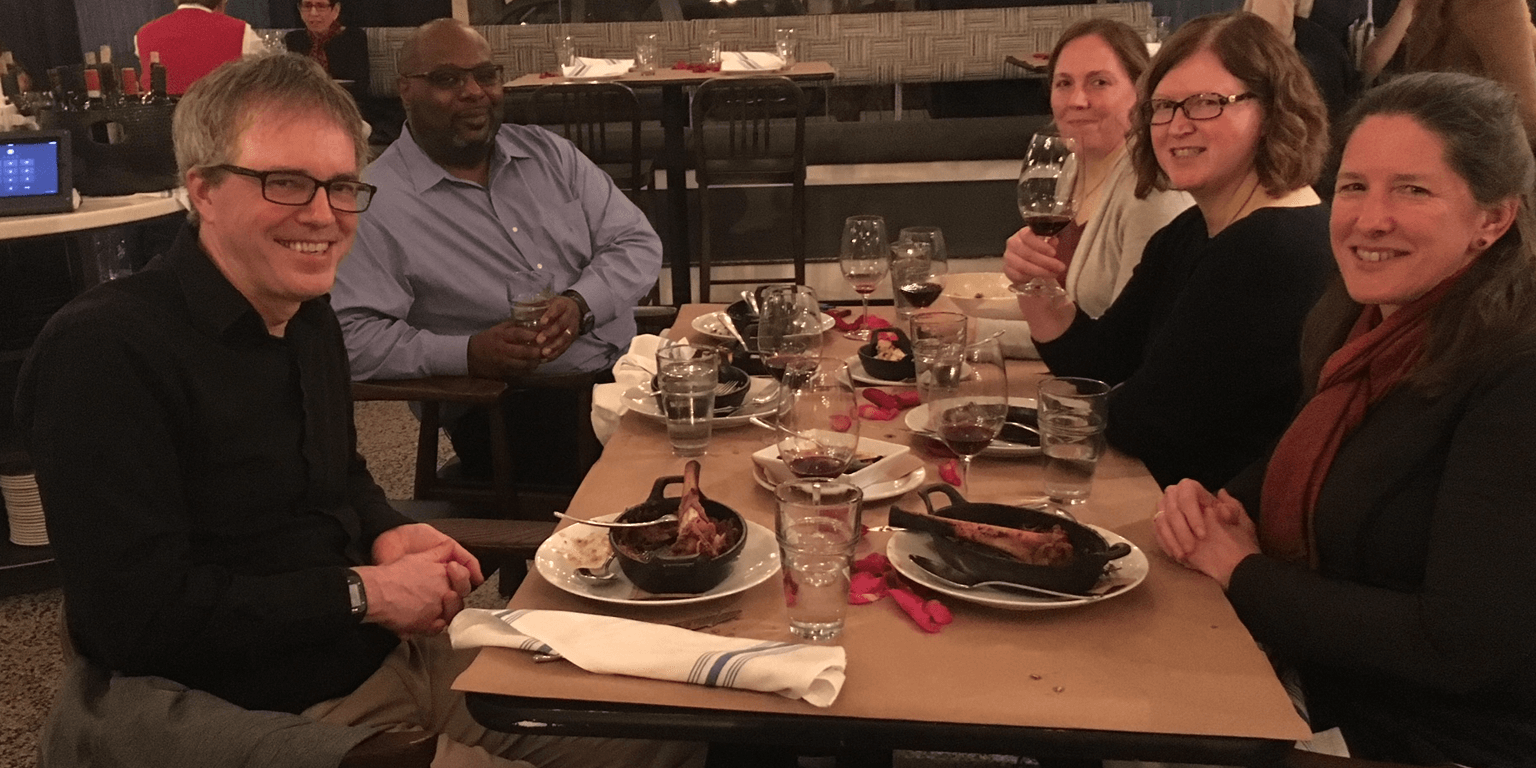
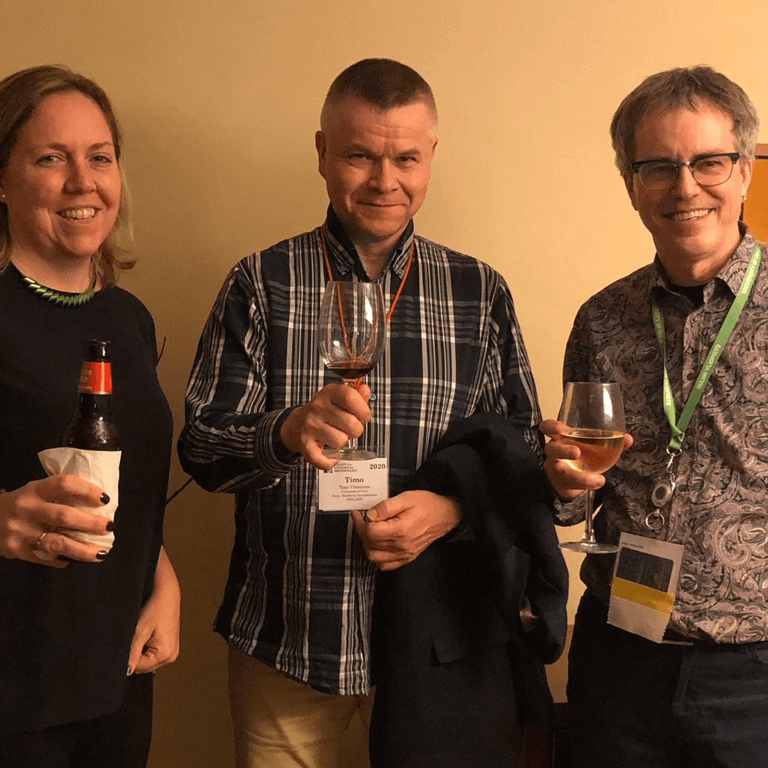
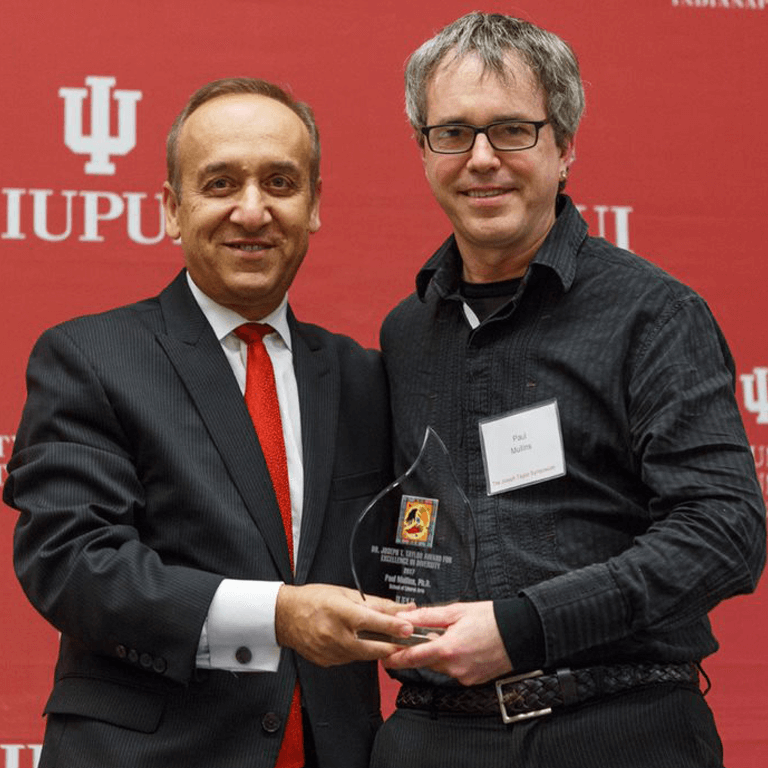
(Top Photo) - Dr. Paul Mullins (left) with colleagues at the Taylor Symposium in 2018. (Left Photo) - Paul Mullins (right) with historic archaeology colleagues Krysta Ryzewski (left) and Timo Ylimaunu (center). (Right Photo) - Paul Mullins receiving the Taylor Diversity Award in 2018 from IUPUI Chancellor Emeritus Nasser Payder, photo courtesy of Liz Kaye, Indiana University.
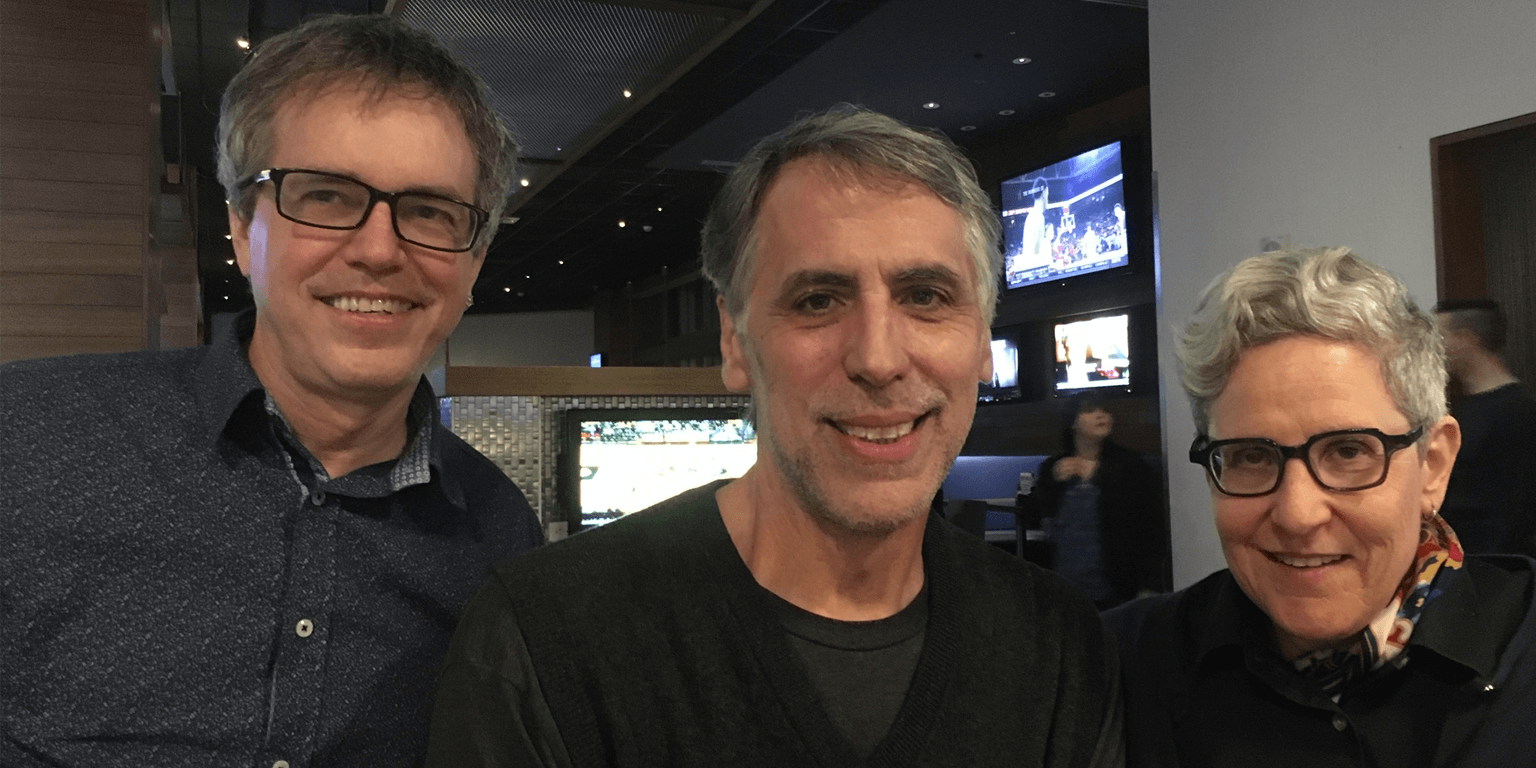
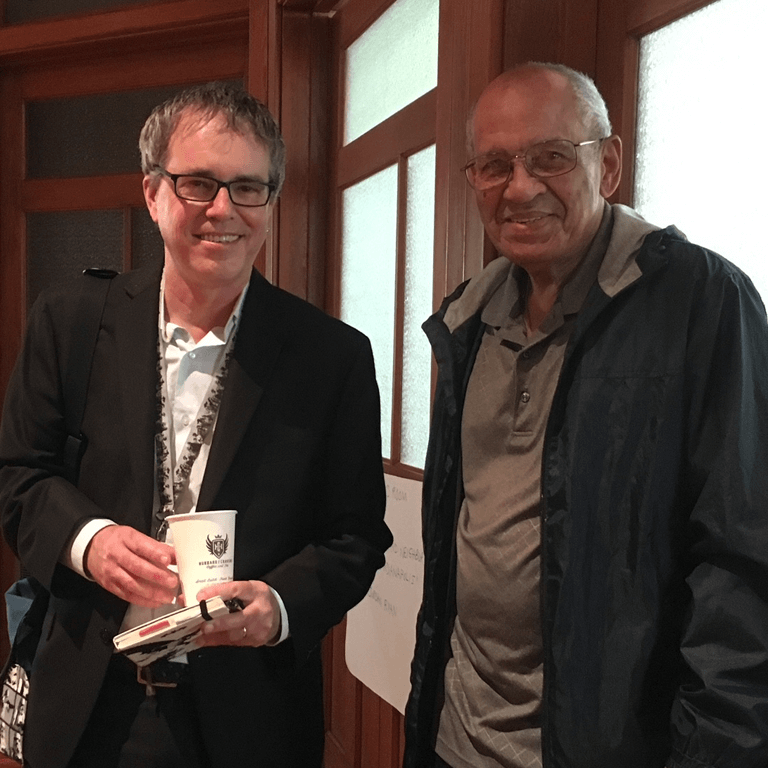
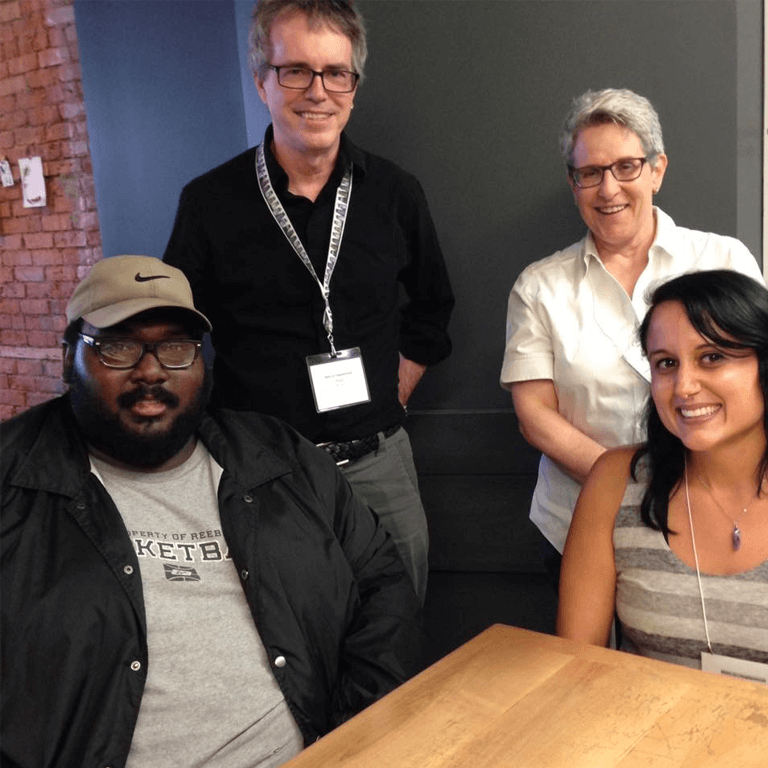
(Top Photo) - Dr. Paul Mullins (left), Dr. Saitta (center), and Dr. Susan Hyatt (right). (Left Photo) - Dr. Paul Mullins (left) and Thomas Ridley (right). (Right Photo) - Dr. Paul Mullins (top left), with Dr. Susan Hyatt (top right), with students at the Midwest Historical Archaeology Conference in Detroit.
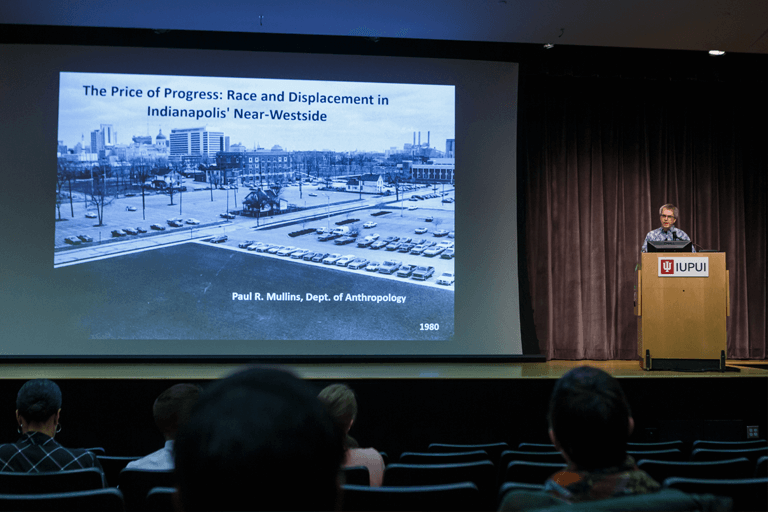
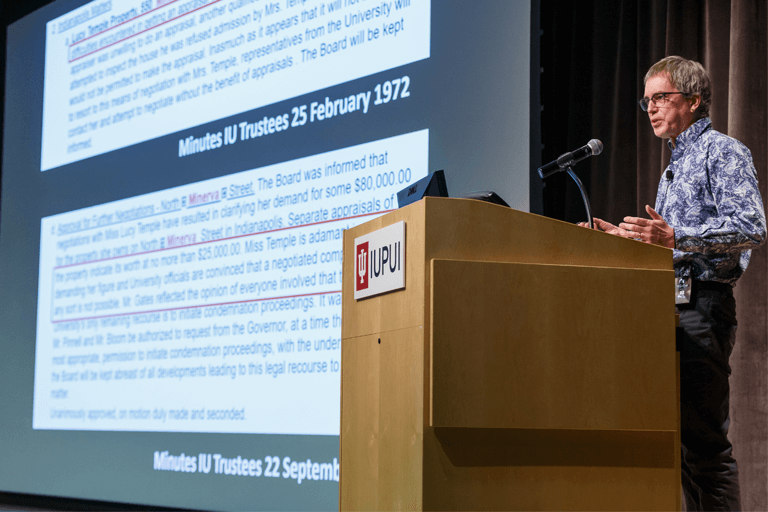
Q and A with Dr. Paul Mullins
I was into theatre in high school, and I thought that’s what I would study in college. And as an undergraduate, I was a Communications Study major. But, one summer I participated in an archaeological field trip at [Thomas Jefferson’s home] Monticello, and after that experience, I began to feel the kind of curiosity about what we could do with archaeology to better understand social relationships and social inequality.
I would say that we don’t solve problems so much as we address them. What I hope to do with my scholarship is to start productive conversations about difficult issues that people would rather not talk about. That seems like a modest goal but it’s not easy and relatively few people do it. The idea of a conversation is that it is based on give and take. I am trying to engage folks in conversations about challenging histories that many people would just as soon forget.
I've had I think I've had more of an impact on campus, really than I have in the community. Even though I'm really pleased with the impact my research has had in the neighborhoods around the campus, I think my biggest intervention has been on the way we on campus view our relationship to the community that was here before we were. This was a community of color that was displaced. Many of those descendants still live on the near Westside, in proximity to campus, as well as in other Indianapolis neighborhoods. When I arrived here 20 years ago, a lot of people had been wanting to have that conversation, but no one was willing to start it. I was too foolish to see that, so I just jumped right in. And suddenly, lots of those individuals who were also very aware of this history started coming out of the woodwork. Some of them were staff. Some of them were community members. And lots of them were full time faculty.
Since then, we’ve had a lot of programs and activities that address that history. There is the exhibit on the ground floor of the science building about the community that we displaced to build our campus, called “Welcome to the Neighborhood;” there are historical markers around campus; and there is the Through Their Eyes Memorial Scholarship,” which commemorates the generation who once called Ransom Place, Indiana Avenue and our campus home, by offering their descendants scholarships to IUPUI . Some years ago, I collaborated with a local resident, the late Glenn S. White, on the book, The Price of Progress, which captured the sentiments of community elders, who celebrated the history of their near-Westside neighborhood and reflected on how that community had been transformed by urban renewal. All of these activities have been meaningful to me in showing how we can use our research to address and, to some modest extent, to redress the injuries caused by historical injustices.
Definitely working with elders. When you walk away from an interview with an elder, and you know you've learned something from them, it is so rewarding. With most older folks, they will also acknowledge that they've gotten something from me and the work that I do. It’s so great to learn from them and then to share their knowledge and experiences with broader audiences. I am compulsively thorough about my research, but after some of these interviews, I know that there is always something more to learn or there may be something I have missed. Sharing this material through my blogs, Archaeology and Material Culture, and Invisible Indianapolis, has made these stories available and accessible to a larger public audience.
From the time I have been at IUPUI, students have been an important part of my work. For several years, I had students working on archaeological digs on campus and in the adjacent neighborhood, Ransom Place, to explore how we can understand the world and its divisions through the lens of materiality. I think most of our students understand that from now on, archaeology will always be conducted not only in communities but with communities. I have also involved students in using digital resources to explore the stories of the recent past and many of them have contributed to blogs I set up, including African-American Suburbia, and to a site that explores racial displacement and urban transformation along Indianapolis’ downtown canal. In many cases, students have uncovered stories that have really added new insights into understanding our city’s past and have documented the roles played by urban renewal and displacement in shaping our contemporary landscape.
Community people are my research! My work is really driven by my conversations with community residents and their interests and concerns.
This is the golden age of digital resources. I remember in my early years, having to work with microfilm to do historical research. Now we have city directories, maps, newspapers and census data, all of which are available online and are searchable. I have taught many of my colleagues and my students to use these resources to explore issues in our city’s past. My wife [Marlys Pearson] is also an excellent scholar and her proficiency using digital resources is easily as good as mine, so it helps to collaborate with her. I think that my particular disciplinary home, Historical Archaeology, is made up of people like me who are breaking down boundaries between public history, cultural anthropology and archaeology.
It's all about the storytelling. That’s the creative end of the research process. You can do all the research but then, not tell the story. It’s the stories that are key to making our knowledge accessible and politically relevant.
Conversation with Dr. Paul Mullins
On Friday, February 24, 2023 from 12 noon to 1:00 p.m., several of Dr. Paul Mullins’ colleagues shared how his work has and continues to impact their lives and academic careers. This presentation also shows how Paul Mullins' research is an exemplary model of IUPUI faculty members translating research into practice for the betterment of their fields and communities. "An Exploration in the Power of Community Impact in the Work of Paul Mullins."
Interested in Becoming an IUPUI TRIP Scholar?
Eligibility
IUPUI faculty member conducting translational community-based research
Benefits
- Valued member of an extensive network of researchers/collaborators
- Opportunities to showcase work
Subscribe to the TRIP Scholars of the Month

